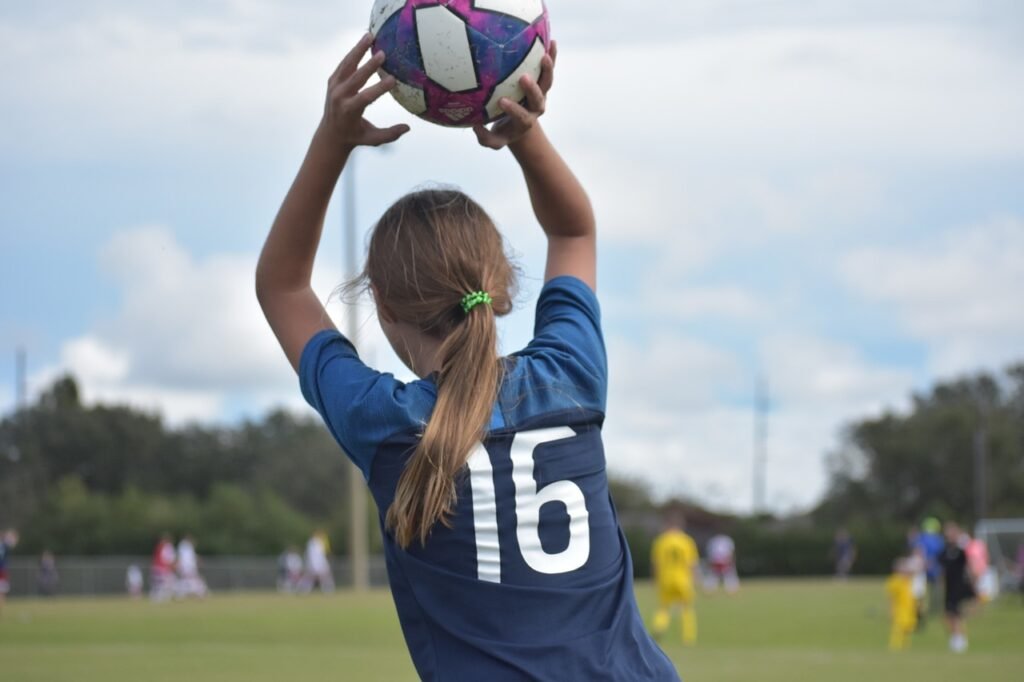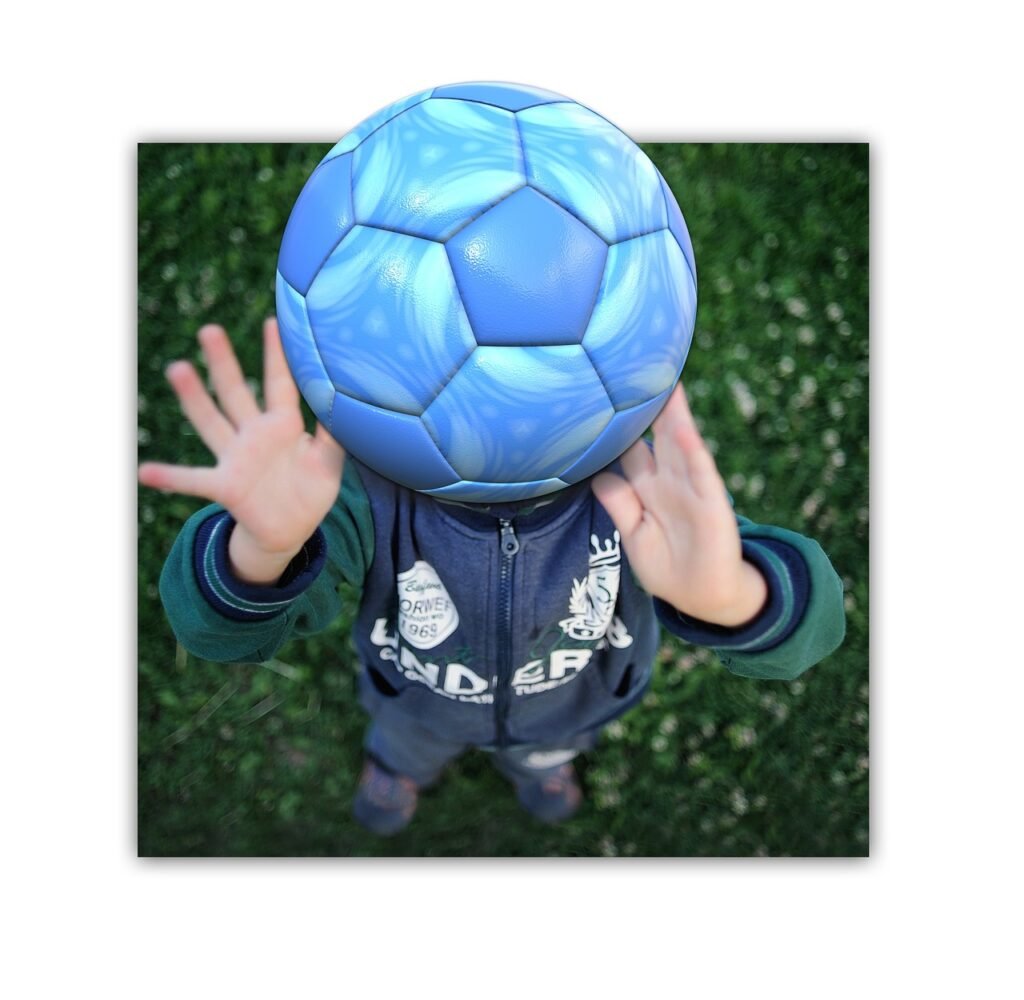In the United States, newborn babies make their grand entrance into the world garbed in what are purportedly the game clothes of the big leagues. Onesies emblazoned with tag lines such as “First Round Draft Pick” or “Mommy’s Favorite Shortstop” litter baby-wear racks, preparing the next generation for the team sports of football, basketball, and baseball. These team-oriented sports have been entrenched in our culture from time immemorial; they will form part of every child’s fate before he ever takes his first steps.

But have you ever noticed how there are no equivalent slogans for track and field? Onesies that do not say “Future Olympian” or “I Can Throw More Than Tantrums.” So many throwing events are not focused completely on track and field, even though almost all other sports expect that these events would be the stepping stones for participating in other sports. Under 12s would most certainly be trained in those throw events and develop as young athletes. It would also grow a generation of great coaches.
The power of throwing: Every child has a talent. So, what do “thrower babies” look like? Tall or short? Stocky or slim? Fast or not fast? The answer is quite simple: yes! Size or athletic ability does not matter to throwing; every kid who throws is doing well. Even children with disabilities, if they have the desire and ability to safely handle the implements, can participate and excel. Throwing teaches focus, discipline and skills; and just like any sport, it’s accessible to everyone.
Coaching kids from five onwards has taught me the art of engaging kids in fun and easy drills that develop their skills without bogging them down. Kids are notorious for their short attention spans; however, big strides shall not be made within the foreground of this short distraction. We engage and excite them with repetitive opportunities for involvement, small praises for improvements, and funny stories that grab their interest. With a positive attitude, I have come to believe that every child can advance-whether pursuing Olympic glory or just going through the fun of learning something new.
The Life of a Throwing Coach
To say a few words about my background before discussing the coaching itself. I was a thrower at both high school and college. I never attained Olympic standards, but somehow it did not matter to me, as I had some great coaches who not only taught me technique but also gave me a deep personal understanding of the sport. So that connection to coaching is what spawned my wish to share it with others, especially younger people. Since then, I have coached nearly 60 athletes of all levels, from five years old to post-collegiate level, helping them improve their throws and sometimes even secure scholarships.
It really is about getting a little better each day and not about being the best in the world. That’s something I want to pass on to the next generation of throwers: the joy of getting better, learning the fundamentals, and seeing improvements.
Concrete Ideas for Young Throwers Development
Teaching younger throwers requires four core concepts to make throwing seem less of a mystery and more of a fun challenge.
- Movements in Different Planes
Most sports move straight lines, with the goal in mind of getting to Point A from Point B as fast as possible. The throwing movement is different. It deals with movement over different planes with body separation, coordination, and timing. Since throwing involves some movement over different planes of motion, if kids understand how to use their bodies in different planes, it will apply their strength in a much more effective way, thus increasing the power behind their throws. The key is to teach them the right technique early on, during developmentally critical periods, so they really stand above the pack as they mature. - Teaching Separation
One of the major key features of the throwing movement is the separation of the upper body from the lower body. Simplistically put, you are turning your hips one way while your shoulders go the opposite way. Young children are most naturally and wonderfully bendy; hence, not too much work is required to teach them something like that—it takes a lot of repetition, coupled with some fun drills like pretending to twist into a “T” shape. That simple drill would be aiding the understanding of throwing body mechanics. - Body Connection
While the upper and lower body follow opposite twists, they must still connect up. Thus, I teach kids to connect their body movements such that as they twist, the torso follows the hips. This teaches them how to lead with their lower body, and leading with the lower body is a really important teaching point for developing power in their throws. - Independent Movement of Parts
Can children rub their bellies and pat their heads at the same time? This activity actually teaches them how to move different parts of their bodies independently, which is a very essential skill for throwing. After twisting and connecting their bodies, I teach children to twist their hips while keeping their upper bodies still. This means practicing the independent movement that is fundamental to the throwing action.
Fun and Safe
Every child born into this universe should know and understand the “weight” and when they throw something, know it takes power or becomes a weapon. I remind the children that those implements were instruments of “war” once, and such instantaneously renders a responsibility and respect to the sport. Here it becomes important for the children to handle implements in the right manner.
Throwing becomes dangerous if it is not taught properly-but with children, understanding the technique as much as possible and adopting a proper respect for these tools, they are free to engage in practice as safely as any other activity. I teach them all about technique, safety, and discipline first and foremost-and peas make them grow into responsible athletes.
Highlighting Individuality in the Team Environment
Track and field is indeed special because it helps kids compete individually in a team setting. This aspect of personal achievement is quite empowering, especially for those kids who might feel overshadowed in team sports. In throw events, every athlete gets a moment of glory—there’s no waiting for the coach to send them into the game; it’s all about perform, perform, and perform again!
I believe that many throwers tend to be introverted, which makes this aspect of the sport all the more meaningful to them. They can compete without worrying about team dynamics, and the individual focus allows for development at their own pace. As a coach, I want to help each child enjoy the journey and trust the process, putting their attention on their progress.
Concluding Thoughts: Small Steps in the Right Directions yield Big Outcomes
Coaching young throwers demands a lot of patience, repetition, and the insatiable love for the sport. This love must be shared during every simple body movement used to teach the correct technique and safety. All these small steps add up to the realization of the big picture: national performances. Whether aiming for a national championship or simply working on improving his/her throw, any tiny step forward is a win; that’s the greatest reward for me as a coach: seeing kids grow, improve, and learn something new.
Throwing is not about tall or fast; it’s about everyone. Under proper guidance and training, every child can and should. Letting these performances give joy to every child.
